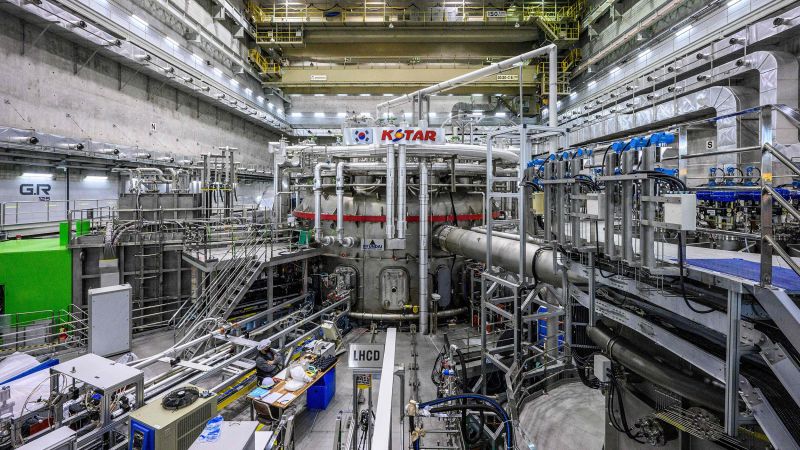- cross-posted to:
- [email protected]
- cross-posted to:
- [email protected]
Scientists in South Korea have announced a new world record for the length of time they sustained temperatures of 100 million degrees Celsius — seven times hotter than the sun’s core — during a nuclear fusion experiment, in what they say is an important step forward for this futuristic energy technology.
Nuclear fusion seeks to replicate the reaction that makes the sun and other stars shine, by fusing together two atoms to unleash huge amounts of energy. Often referred to as the holy grail of climate solutions clean energy, fusion has the potential to provide limitless energy without planet-warming carbon pollution. But mastering the process on Earth is extremely challenging.
The most common way of achieving fusion energy involves a donut shaped reactor called a tokamak in which hydrogen variants are heated to extraordinarily high temperatures to create a plasma.
High temperature and high density plasmas, in which reactions can occur for long durations, are vital for the future of nuclear fusion reactors, said Si-Woo Yoon, director of the KSTAR Research Center at the Korean Institute of Fusion Energy (KFE), which achieved the new record.
Sustaining these high temperatures “has not been easy to demonstrate due to the unstable nature of the high temperature plasma,” he told CNN, which is why this recent record is so significant.
KSTAR, KFE’s fusion research device which it refers to as an “artificial sun,” managed to sustain plasma with temperatures of 100 million degrees for 48 seconds during tests between December 2023 and February 2024, beating the previous record of 30 seconds set in 2021.


